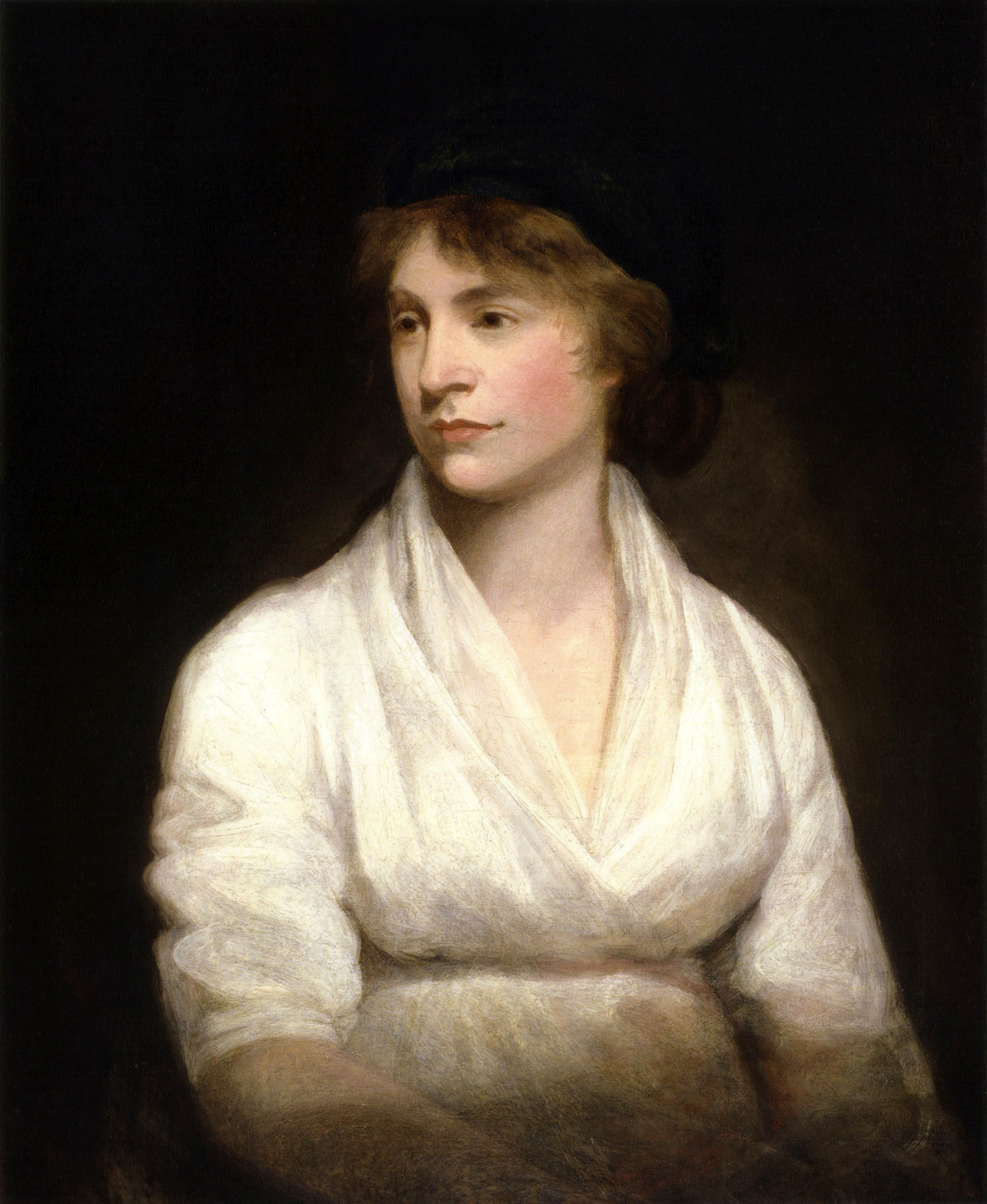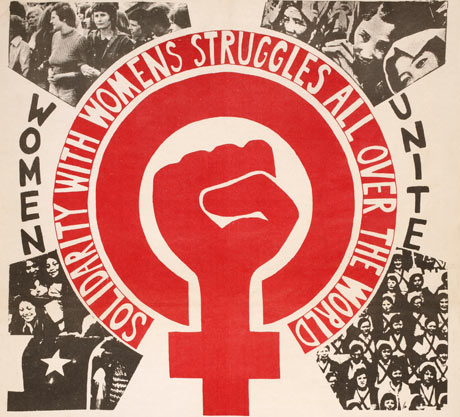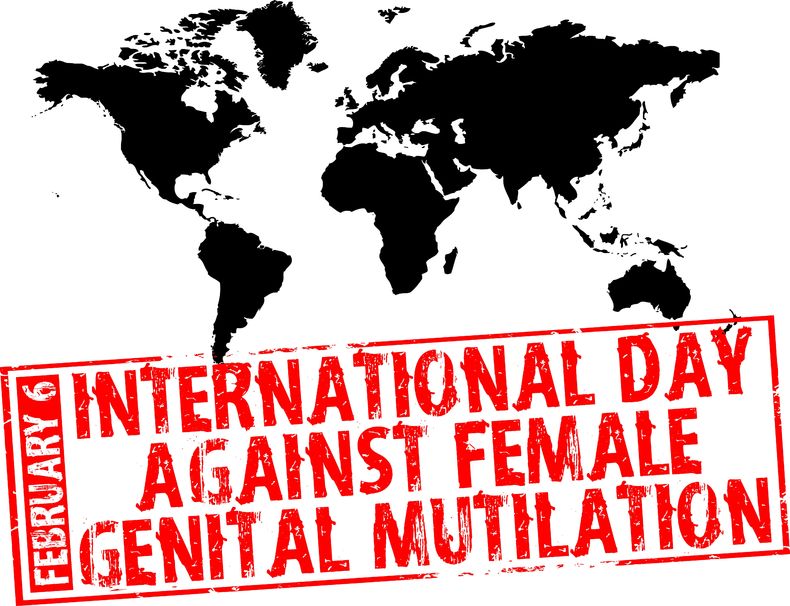Muller, Nadine and Mark Llewellyn (eds.), ‘Introduction: Feminisms, Sex and the Body’, Journal of Gender Studies, Special Issue: Feminisms, Sex and the Body, 20:4 (Winter 2011), pp. 315-319
This is an Author’s Original Manuscript of an article submitted for consideration in the Journal of Gender Studies [copyright Taylor & Francis]. To gain access to Feminisms, Sex and the Body, please visit http://www.tandfonline.com/toc/cjgs20/20/4.
INTRODUCTION
Feminisms, sex and the body: the terms of the debate
[T]he prevailing notion respecting a sexual character was subversive of morality, and I have contended, that to render the human body and mind more perfect, chastity must more universally prevail, and that chastity will never be respected in the male world till the person of a woman is not, as it were, idolized, when little virtue or sense embellish it with the grand traces of mental beauty, or the interesting simplicity of affection. (Wollstonecraft 1792, p. xxi)
 From Mary Wollstonecraft’s call for chastity as a universal rather than a female virtue in A vindication of the rights of woman (1792), through nineteenth and early-twentieth century writings on the commodification of women in marriage and prostitution and campaigns for rational dress, to fights for women’s reproductive rights and sexual liberation in the 1960s and 1970s, the female body and female sexuality as sites of oppression and empowerment have long occupied a central place of concern in feminist theory and practice. In the new millennium, as in previous decades, this interest continues to engender productively diverse and conflicting, as well as often conflicted, responses by feminist scholars across disciplines whose work reflects upon and attempts to conceptualise women’s sexual bodies within the cultural and political landscapes of the twenty-first century.
From Mary Wollstonecraft’s call for chastity as a universal rather than a female virtue in A vindication of the rights of woman (1792), through nineteenth and early-twentieth century writings on the commodification of women in marriage and prostitution and campaigns for rational dress, to fights for women’s reproductive rights and sexual liberation in the 1960s and 1970s, the female body and female sexuality as sites of oppression and empowerment have long occupied a central place of concern in feminist theory and practice. In the new millennium, as in previous decades, this interest continues to engender productively diverse and conflicting, as well as often conflicted, responses by feminist scholars across disciplines whose work reflects upon and attempts to conceptualise women’s sexual bodies within the cultural and political landscapes of the twenty-first century.
 Since the so-called second wave’s embracing of female desire and bodily pleasures, feminist understandings of the body as a means of experiencing and expressing sex/uality have become increasingly varied and complex. Within Western cultures in particular, these new body politics are commonly framed as both a response to and participation in what has become known variously as the ‘pornographication of the mainstream’ (McNair 2002, p. 12) or the ‘sexualization of culture’ (Attwood 2009, p. xiii). As numerous critics have noted, the increasing presence of sex in the public sphere which these terms describe is particularly evident in all areas of consumer culture: media advertisements have long ceased to shy away from nudity and sexually explicit imagery, WHSmith promote a Playboy stationery range aimed at pre-teens, and fitness clubs offer pole dancing classes as a form of exercise (Attwood 2009, McRobbie 2009, Walter 2010). In striking contrast, but also close relation, to this ‘striptease culture’ (McNair 2002) of sexual revelation and display, stand current debates surrounding Islamic veiling practices which have prompted new and much needed feminist engagements with religion and multiculturalism. What women’s participation in both these acts of bodily exposure and concealment brings to the fore are the potentials and problematics of feminist notions of choice and individualism, begging, more specifically, the question of whether women’s ‘voluntary’ involvement in potentially oppressive structures and practices renders them either complicit in their own and other women’s objectification or whether it provides a legitimate space of subversion, liberation and personal fulfilment. Angela McRobbie claims that participation in ‘the normalisation of pornography’ is not a feminist act but, instead, demonstrates ‘an uncritical relation to dominant commercially produced sexual representations’ (2009, pp. 17 and 18), while Michele Miller insists that feminists can ‘focus on a body politics that celebrates the strength of the female sexual body, while recognising that there are structural forces, such as patriarchy and capitalism, applying power on them and constraining the way they are expected to behave in the world’ (2008, p. 67). ‘Instead of rejecting beauty and sexuality’, she suggests, feminists can ‘focus on asserting their sexual selves, not necessarily for the male gaze but for themselves, allowing them to be both subject and object of their own sexual lives’ (Miller 2008, p. 67). Thus, within this paradox of women’s simultaneous contribution to and subversion of their bodies’ sexual objectification, ‘you could be a feminist aerobics instructor, a feminist exhibitionist, or a feminist supermodel’ (Siegel 2007, p. 143).
Since the so-called second wave’s embracing of female desire and bodily pleasures, feminist understandings of the body as a means of experiencing and expressing sex/uality have become increasingly varied and complex. Within Western cultures in particular, these new body politics are commonly framed as both a response to and participation in what has become known variously as the ‘pornographication of the mainstream’ (McNair 2002, p. 12) or the ‘sexualization of culture’ (Attwood 2009, p. xiii). As numerous critics have noted, the increasing presence of sex in the public sphere which these terms describe is particularly evident in all areas of consumer culture: media advertisements have long ceased to shy away from nudity and sexually explicit imagery, WHSmith promote a Playboy stationery range aimed at pre-teens, and fitness clubs offer pole dancing classes as a form of exercise (Attwood 2009, McRobbie 2009, Walter 2010). In striking contrast, but also close relation, to this ‘striptease culture’ (McNair 2002) of sexual revelation and display, stand current debates surrounding Islamic veiling practices which have prompted new and much needed feminist engagements with religion and multiculturalism. What women’s participation in both these acts of bodily exposure and concealment brings to the fore are the potentials and problematics of feminist notions of choice and individualism, begging, more specifically, the question of whether women’s ‘voluntary’ involvement in potentially oppressive structures and practices renders them either complicit in their own and other women’s objectification or whether it provides a legitimate space of subversion, liberation and personal fulfilment. Angela McRobbie claims that participation in ‘the normalisation of pornography’ is not a feminist act but, instead, demonstrates ‘an uncritical relation to dominant commercially produced sexual representations’ (2009, pp. 17 and 18), while Michele Miller insists that feminists can ‘focus on a body politics that celebrates the strength of the female sexual body, while recognising that there are structural forces, such as patriarchy and capitalism, applying power on them and constraining the way they are expected to behave in the world’ (2008, p. 67). ‘Instead of rejecting beauty and sexuality’, she suggests, feminists can ‘focus on asserting their sexual selves, not necessarily for the male gaze but for themselves, allowing them to be both subject and object of their own sexual lives’ (Miller 2008, p. 67). Thus, within this paradox of women’s simultaneous contribution to and subversion of their bodies’ sexual objectification, ‘you could be a feminist aerobics instructor, a feminist exhibitionist, or a feminist supermodel’ (Siegel 2007, p. 143).
 Within these increasingly complex and contradictory contemporary contexts, this special issue contributes to feminists’ continuing development of new theories and approaches to both emerging and long-established issues pertaining to women’s bodies and sexualities in the twenty-first century, within and beyond the Western world. Across and within each of the articles collected here, we encounter, to different extents and in different constellations, documentations of women’s experiences of their bodies and of their sex/ualities, critical investigations of the personal, social and cultural practices which impact upon those experiences, and acute analyses of the ways in and extents to which these experiences and practices are reinforced and/or challenged through representations of women’s sexual bodies in literature, the media, politics and law. It is through their careful attention to these various spaces in which female bodies and sexualities are exposed, constructed and policed that the essays collected here, not only shine new light on current feminist issues surrounding the female sexual body in the contemporary world, but also cast a critical eye on the very manner in which contemporary feminisms conceptualise the female body and women’s sexualities.
Within these increasingly complex and contradictory contemporary contexts, this special issue contributes to feminists’ continuing development of new theories and approaches to both emerging and long-established issues pertaining to women’s bodies and sexualities in the twenty-first century, within and beyond the Western world. Across and within each of the articles collected here, we encounter, to different extents and in different constellations, documentations of women’s experiences of their bodies and of their sex/ualities, critical investigations of the personal, social and cultural practices which impact upon those experiences, and acute analyses of the ways in and extents to which these experiences and practices are reinforced and/or challenged through representations of women’s sexual bodies in literature, the media, politics and law. It is through their careful attention to these various spaces in which female bodies and sexualities are exposed, constructed and policed that the essays collected here, not only shine new light on current feminist issues surrounding the female sexual body in the contemporary world, but also cast a critical eye on the very manner in which contemporary feminisms conceptualise the female body and women’s sexualities.
This issue
 Reflecting the conceptual and theoretical concerns outlined in the precis above, the Journal of Gender Studies board welcomed the proposal for a special issue themed on the topic ‘Feminisms, sex and the body’. The response to our initial call for papers from academics in the area was exceptionally loud. Almost 100 papers were generated to the submission deadline from individual researchers working across fields as diverse as literature, law, psychology, cultural studies, sociology, film studies and economics. Several of these pieces will appear in future general issues of the journal as the quality of submissions was often very high. This reflected well upon the multiplicity of ways in which the discourse around feminism in its plural forms connects to, thrives on and engages in active dialogic with the subjectivities of body and sexuality. Ensuring that the selection for this publication was able to reflect a true range of such engagements has proved difficult given the capacity of a single issue of only six articles. Our own backgrounds in literary studies means that there is a deeper emphasis on the textual interrogation of such themes but nevertheless the disciplinary encounters we have collected in this issue speak to a wider range of concerns than those held within a single field of study.
Reflecting the conceptual and theoretical concerns outlined in the precis above, the Journal of Gender Studies board welcomed the proposal for a special issue themed on the topic ‘Feminisms, sex and the body’. The response to our initial call for papers from academics in the area was exceptionally loud. Almost 100 papers were generated to the submission deadline from individual researchers working across fields as diverse as literature, law, psychology, cultural studies, sociology, film studies and economics. Several of these pieces will appear in future general issues of the journal as the quality of submissions was often very high. This reflected well upon the multiplicity of ways in which the discourse around feminism in its plural forms connects to, thrives on and engages in active dialogic with the subjectivities of body and sexuality. Ensuring that the selection for this publication was able to reflect a true range of such engagements has proved difficult given the capacity of a single issue of only six articles. Our own backgrounds in literary studies means that there is a deeper emphasis on the textual interrogation of such themes but nevertheless the disciplinary encounters we have collected in this issue speak to a wider range of concerns than those held within a single field of study.
Our rationale has been to provide a firm account of the contemporary interrogations of concepts and ideas refracted through feminist analysis within differing and different research approaches. This, ultimately, does not necessarily lead to cohesion across the pieces presented, but it is in the very dissonances working over and across them that we might perceive the tensions inherent in the terminology which gives this issue its thematic hook. For example, Joel Gwynne’s  article on postfeminism and the erotic memoir re-acts in contentious ways when placed alongside Alison Winch’s reading of postfeminist conduct books. Both those articles speak in an arresting and often highly nuanced manner to the issues of female circumcision, bliss and the divine, girl industries and contemporary commodification, and the perennial theme of the relationship between the present generation of women and the(ir) motherhood explored in the other pieces. It is such jostling for discourse dominance that provides one of the more persuasive arguments for our pluralisation of feminism as a mode of analysis and as an intellectual motivation behind the issue as a whole, for the research articles in this themed issue speak to and are speaking of feminisms without concern or apprehension about the diversity of meanings such a term might have in present debates.
article on postfeminism and the erotic memoir re-acts in contentious ways when placed alongside Alison Winch’s reading of postfeminist conduct books. Both those articles speak in an arresting and often highly nuanced manner to the issues of female circumcision, bliss and the divine, girl industries and contemporary commodification, and the perennial theme of the relationship between the present generation of women and the(ir) motherhood explored in the other pieces. It is such jostling for discourse dominance that provides one of the more persuasive arguments for our pluralisation of feminism as a mode of analysis and as an intellectual motivation behind the issue as a whole, for the research articles in this themed issue speak to and are speaking of feminisms without concern or apprehension about the diversity of meanings such a term might have in present debates.
The issue begins with ‘The next generation of pregnant women: more freedom in the public sphere or just an illusion?’ by Heffernan, Nicolson and Fox. In placing notions of liberation, the women’s movement of the mid-twentieth century and media representations of debates around choice, contraception and equal opportunities, the article highlights the need to consider contemporary mediations of female identity as part of an historicised cultural moment. Recognising the continued ‘policing’ of female identity within such seemingly empowering and enfranchising possibilities over the last half-century, Heffernan, Nicolson and Fox argue that the site of pregnancy offers particular modes of (re)presentation in need of a refreshed response, especially in relation to mass media narratives around the pregnant/maternal body.
 In highlighting the need for a different perspective on neo-liberal figurations of the female body as constructed through a potentially controlling and restrictive cultural model, the first article raises implicit questions about the indoctrination of certain behavioural motifs and traits from the postwar baby boomer generation through to the twenty-first century. Such topics are picked up in the second article in the issue by Yeran Kim. ‘Idol republic: the global emergence of girl industries and the commercialisation of girl bodies’ puts forward the argument that increased attention to the figure of the female child and to ‘young femininity’ in the context of the massification and commodification of cultural models around feminine behaviour, purchasing power and market branding, raises fundamental questions about the de-specification of identity and the constraints of the female body within corporate structures of consumer self-construction. What is most striking about the analysis is that such models are ramped up from the level of corporate projection to the national and inter-governmental mapping of social movement, gender roles and equality. As Kim suggests, there are ways in which perspectives on apparently market driven choices about identity can reveal much about the cultural manners and conventions through which gender politics remains enacted and inscribed.
In highlighting the need for a different perspective on neo-liberal figurations of the female body as constructed through a potentially controlling and restrictive cultural model, the first article raises implicit questions about the indoctrination of certain behavioural motifs and traits from the postwar baby boomer generation through to the twenty-first century. Such topics are picked up in the second article in the issue by Yeran Kim. ‘Idol republic: the global emergence of girl industries and the commercialisation of girl bodies’ puts forward the argument that increased attention to the figure of the female child and to ‘young femininity’ in the context of the massification and commodification of cultural models around feminine behaviour, purchasing power and market branding, raises fundamental questions about the de-specification of identity and the constraints of the female body within corporate structures of consumer self-construction. What is most striking about the analysis is that such models are ramped up from the level of corporate projection to the national and inter-governmental mapping of social movement, gender roles and equality. As Kim suggests, there are ways in which perspectives on apparently market driven choices about identity can reveal much about the cultural manners and conventions through which gender politics remains enacted and inscribed.
 From the political and economic body we move more directly to the physical interruption of female self-determination. Jude Roberts’s article ‘“Circumcision: everyone’s talking about it”: legislation, social pressure and the body’ uses Megan Lindholm’s short fiction ‘Cut’ for a reading through Judith Butler’s analysis of legal infrastructure. Just as concerned with the nature of state-sanctioned physical intervention as Kim’s discussion, Roberts nevertheless offers a provocatively different kind of reading by the assignment of fictional forms with the potential to act as counter-discourse to overarching legal and political frameworks. Indeed, the article makes its argument through pertinent juxtapositioning of different languages and strategies be they legal, theoretical or narratological. What is at the heart of such debates is the nature of voice and articulation and the means by which an individual, a culture, a state or a discourse necessarily inculcate limitations upon the translation of choice, experience and self-determination.
From the political and economic body we move more directly to the physical interruption of female self-determination. Jude Roberts’s article ‘“Circumcision: everyone’s talking about it”: legislation, social pressure and the body’ uses Megan Lindholm’s short fiction ‘Cut’ for a reading through Judith Butler’s analysis of legal infrastructure. Just as concerned with the nature of state-sanctioned physical intervention as Kim’s discussion, Roberts nevertheless offers a provocatively different kind of reading by the assignment of fictional forms with the potential to act as counter-discourse to overarching legal and political frameworks. Indeed, the article makes its argument through pertinent juxtapositioning of different languages and strategies be they legal, theoretical or narratological. What is at the heart of such debates is the nature of voice and articulation and the means by which an individual, a culture, a state or a discourse necessarily inculcate limitations upon the translation of choice, experience and self-determination.
 Often, however, it is not only the parameters of hegemonic discourses frequently labelled as patriarchal in nature that provide constraints to female self-representation. In this context, the following two articles offer interesting explorations of the counterfeminist strategies and portrayals of physical liberation and choice conveyed in different and divergent narratives of postfeminist sexual and bodily identity. In her piece on so-called feminist conduct books Alison Winch mines the popular stream of makeover books published in recent years, often in association with a related TV series, to underline the ways in which such mass market productions enforce particular views of female identity and female community bonds. Focusing attention on the nature of the way in which such cultural projections envisage female friendship, Winch questions the ‘intimate’ bonds and boundaries these portrayals indicate. Arguing that rather than creating a female solidarity against male models of the made-over woman such depictions of female–female castigation, critique and comparison reinforce cultural norms, Winch employs a discourse of ethics to prompt a reconsideration of the purpose, power and potential for harm such seemingly harmless and entertainment-driven models actually represent. The terms of female language, experience and empowerment are also to the fore in the second of our postfeminist pairing.
Often, however, it is not only the parameters of hegemonic discourses frequently labelled as patriarchal in nature that provide constraints to female self-representation. In this context, the following two articles offer interesting explorations of the counterfeminist strategies and portrayals of physical liberation and choice conveyed in different and divergent narratives of postfeminist sexual and bodily identity. In her piece on so-called feminist conduct books Alison Winch mines the popular stream of makeover books published in recent years, often in association with a related TV series, to underline the ways in which such mass market productions enforce particular views of female identity and female community bonds. Focusing attention on the nature of the way in which such cultural projections envisage female friendship, Winch questions the ‘intimate’ bonds and boundaries these portrayals indicate. Arguing that rather than creating a female solidarity against male models of the made-over woman such depictions of female–female castigation, critique and comparison reinforce cultural norms, Winch employs a discourse of ethics to prompt a reconsideration of the purpose, power and potential for harm such seemingly harmless and entertainment-driven models actually represent. The terms of female language, experience and empowerment are also to the fore in the second of our postfeminist pairing.
Joel Gwynne’s article, like Winch’s, explores a popular contemporary form of female expression but rather than one of the self-fashioning makeover models his focus is on the erotic memoir and its conflicted engagement with feminism. ‘“Baby, I’m not quite finished”: postfeminism and the negotiation of sexual boundaries in the contemporary erotic memoir’ suggests the ways in which three recent memoirs by Abby Lee, Catherine Townsend and Suzanne Portnoy raise issues about the nature of sexual choice, coercion and liberation. This conflicted location of female identity seemingly fixated on the site of the body is, as Gwynne highlights, as much about the conceptual and theoretical underpinnings of present (post)feminist discourses about pleasure, the erotic and an ethics of desire.
 The final piece in the issue turns us to literature again. This time, however, it is not in order to explore the erotics of the contemporary or the fashionability of identity politics but to plot the religious subtext of the bodily engagement in the work of a leading female novelist. Abigail Rine’s closely attentive reading of A. L. Kennedy’s Original bliss analyses the means of desire and feminine sexuality as co-influenced by models of Judeo-Christian sin and violence alongside the liberating potential of French feminist thinkers such as Helene Cixous and Luce Irigaray. Making a persuasive case for the erotic and ethical re-situation of female desire in the context of the divine, Rine’s study illuminates the narratological possibilities of counter-discourse and creative reconfiguration of supposed societal and cultural norms that serve as a key theme in the preceding essays too. Ultimately, what each of the contributions to this special issue demonstrates is the flexibility and indeterminacy of feminist perspectives on cultural moments, movements and metaphors. This is not to undermine the prospective for feminist critique of subjectivity, mass culture, or gendered politics and economics. It is rather to state that the plurality of feminist discourses is itself an enriching factor in the ways in which we can continue to respond to the often fractured, frequently contentious and fundamentally central concerns of embodied and erotic chargedness that we must confront, not only in academic research but in everyday reality.
The final piece in the issue turns us to literature again. This time, however, it is not in order to explore the erotics of the contemporary or the fashionability of identity politics but to plot the religious subtext of the bodily engagement in the work of a leading female novelist. Abigail Rine’s closely attentive reading of A. L. Kennedy’s Original bliss analyses the means of desire and feminine sexuality as co-influenced by models of Judeo-Christian sin and violence alongside the liberating potential of French feminist thinkers such as Helene Cixous and Luce Irigaray. Making a persuasive case for the erotic and ethical re-situation of female desire in the context of the divine, Rine’s study illuminates the narratological possibilities of counter-discourse and creative reconfiguration of supposed societal and cultural norms that serve as a key theme in the preceding essays too. Ultimately, what each of the contributions to this special issue demonstrates is the flexibility and indeterminacy of feminist perspectives on cultural moments, movements and metaphors. This is not to undermine the prospective for feminist critique of subjectivity, mass culture, or gendered politics and economics. It is rather to state that the plurality of feminist discourses is itself an enriching factor in the ways in which we can continue to respond to the often fractured, frequently contentious and fundamentally central concerns of embodied and erotic chargedness that we must confront, not only in academic research but in everyday reality.
References
Attwood, F., 2009. “Introduction”. In: F. Attwood, ed. Mainstreaming sex: the sexualization of Western culture. London: I.B. Taurus, xiii–xxiv.
McNair, B., 2002. Striptease culture: sex, media and the democratization of desire. London: Routledge.
McRobbie, A., 2009. The aftermath of feminism: gender culture and social change. London: Sage.
Miller, M., 2008. Branding Miss G__: third-wave feminists and the media. Toronto: Sumach Press.
Siegel, D., 2007. Sisterhood interrupted: from radical women to grrls gone wild. Basingstoke: Palgrave Macmillan.
Walter, N., 2010. Living dolls: the return of sexism. London: Virago.
Wollstonecraft, M., 2008 [1792]. A vindication of the rights of woman. London: The Folio Society.
The following articles are collected in this special issue:
1. “The next generation of pregnant women: more freedom in the public sphere or just an illusion?” – Kristin Heffernan, Paula Nicolson & Rebekah Fox
2. “Idol republic: the global emergence of girl industries and the commercialization of girl bodies” – Yeran Kim
3. “‘Circumcision: everyone’s talking about it’: legislation, social pressure and the body” – Jude Roberts
4. “‘Your new smart-mouthed girlfriends’: postfeminist conduct books” – Alison Winch
5. “‘Baby, I’m not quite finished’: postfeminism and the negotiation of sexual boundaries in the contemporary erotic memoir” – Joel Gwynne
6. “Between God and the apple: divinity, violence and desire in A.L. Kennedy’s Original bliss” – Abigail Rine
1 Comment on “[Publications] Feminisms, Sex and the Body”